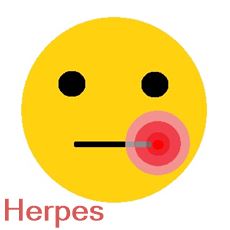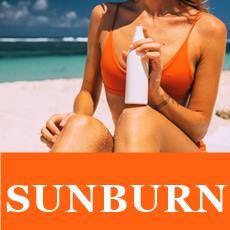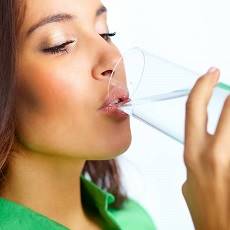Chamomile for skincare
Skin benefits of chamomile
Fact Checked
×All the content published in our website is fact checked to validate its accuracy.
Visit our guidelines web page to learn more about our strict processes regarding how we review our content's sources: reliable and reputable journals, media websites, universities, colleges, organizations, and professionals.
Our articles are based on scientific evidence, and the references are included in their footnotes, which are clickable links to sound scientific papers.
First published: 15. Dec.2024
Overview
Chamomile has been used for cosmetic and medical purposes since antiquity. It has antiseptic and antiviral properties that help to heal wounds, and reduce inflammation; it is well known for its sleep-inducing effects. Here you will learn about the plant, its flower, and its uses, focusing on its skincare effects.
References and Further Reading
(1) Smith, Grafton Elliot, Cyril P. (Cyril Phillips) Bryan, and Heinrich Joachim, (1930). The Papyrus Ebers. [S.l.: s.n., 19.]
(2) Discorides, De materia medica, also see this Greek text and facsimile, 3-154. Anthemis; page 527
(3) Sah A, Naseef PP, Kuruniyan MS, Jain GK, Zakir F, Aggarwal G., (2022). A Comprehensive Study of Therapeutic Applications of Chamomile. Pharmaceuticals (Basel). 2022 Oct 19;15(10):1284. doi: 10.3390/ph15101284. PMID: 36297396
(4) Martins MD, Marques MM, Bussadori SK, Martins MA, Pavesi VC, Mesquita-Ferrari RA, Fernandes KP., (2009). Comparative analysis between Chamomilla recutita and corticosteroids on wound healing. An in vitro and in vivo study. Phytother Res. 2009 Feb;23(2):274-8. doi: 10.1002/ptr.2612. PMID: 18803230
(5) Dai Y-L, Li Y, Wang Q, Niu F-J, Li K-W, Wang Y-Y, Wang J, Zhou C-Z, Gao L-N., (2023). Chamomile: A Review of Its Traditional Uses, Chemical Constituents, Pharmacological Activities and Quality Control Studies. Molecules. 2023; 28(1):133. https://doi.org/10.3390/molecules28010133
(6) European Medicines Agency, (2015). European Union herbal monograph on Matricaria recutita L., flos . EMA/HMPC/55843/2011 July 7, 2015
(7) Kimura R, Schwartz JA, Romeiser JL, Senzel L, Galanakis D, Halper D, Bennett-Guerrero E., (2024). The Acute Effect of Chamomile Intake on Blood Coagulation Tests in Healthy Volunteers: A Randomized Trial. J Appl Lab Med. 2024 May 2;9(3):468-476. doi: 10.1093/jalm/jfad120. PMID: 38300838
(8) Srivastava JK, Shankar E, Gupta S., (2010). Chamomile: A herbal medicine of the past with bright future. Mol Med Rep. 2010 Nov 1;3(6):895-901. doi: 10.3892/mmr.2010.377. PMID: 21132119
(9) Adib-Hajbaghery M, Mousavi SN., (2017). The effects of chamomile extract on sleep quality among elderly people: A clinical trial. Complement Ther Med. 2017 Dec;35:109-114. doi: 10.1016/j.ctim.2017.09.010. Epub 2017 Oct 13. PMID: 29154054
(10) Chang SM, Chen CH, (2016). Effects of an intervention with drinking chamomile tea on sleep quality and depression in sleep disturbed postnatal women: a randomized controlled trial. J Adv Nurs. 2016 Feb;72(2):306-15. doi: 10.1111/jan.12836. Epub 2015 Oct 20. PMID: 26483209
(11) Asma Kazemi, Sara Shojaei-Zarghani, Parham Eskandarzadeh, Mohammad Hashem Hashempur, (2024). Effects of chamomile (Matricaria chamomilla L.) on sleep: A systematic review and meta-analysis of clinical trials. Complementary Therapies in Medicine, Vol 84, 103071, ISSN 0965-2299, https://doi.org/10.1016/j.ctim.2024.103071.
(12) Merfort I, Heilmann J, Hagedorn-Leweke U, Lippold BC, (1994). In vivo skin penetration studies of camomile flavones. Pharmazie. 1994;49:509–511
About this Article
Chamomile for skincare, A. Whittall
©2024 Fit-and-Well.com. First Published: 15.Dec.2024. Update scheduled for 15.Dec.2027. https://www.fit-and-well.com/wellness/chamomile-for-skincare.html
Tags: skin, chamomile, cosmetics, sleep, antimicrobial, eczema, wounds




